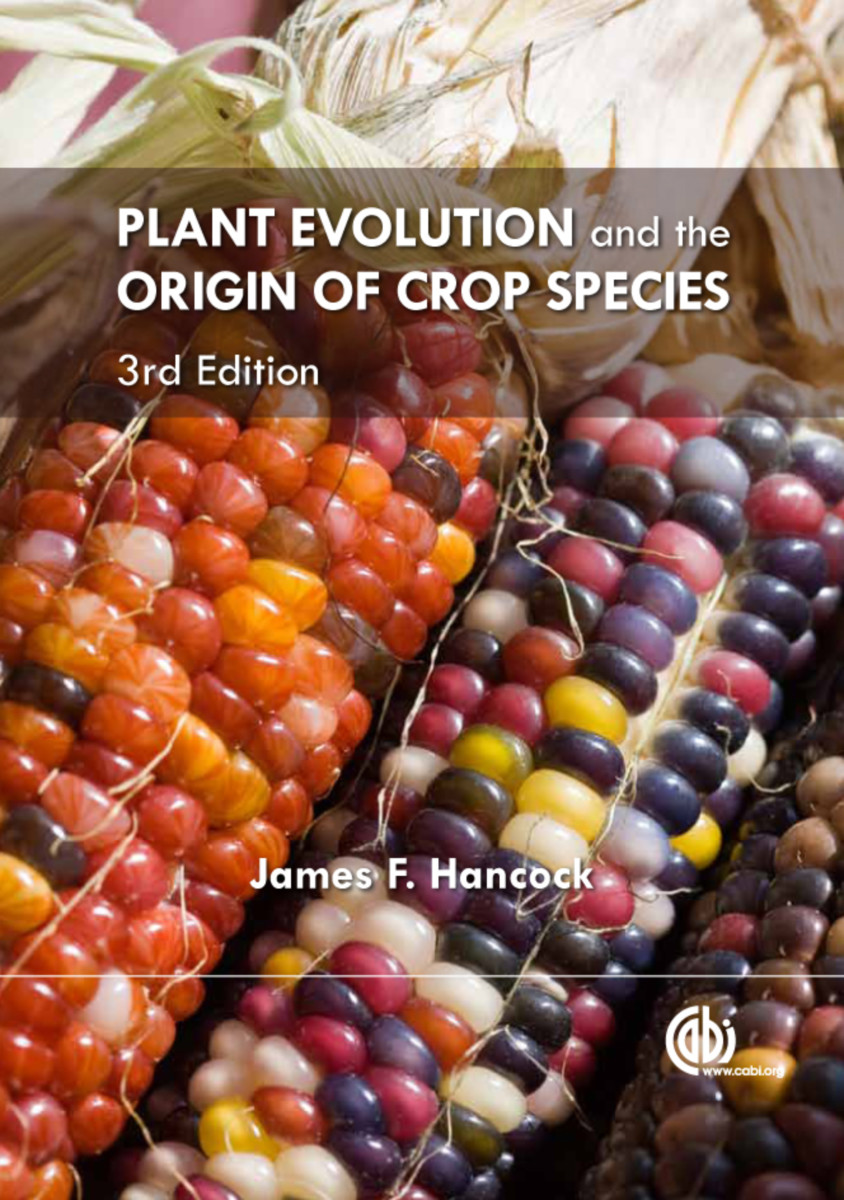Plant Evolution and the Origin of Crop Species Edition 3
- Publisher
CABI - Published
16th April 2014 - ISBN 9781780644776
- Language English
- Pages 256 pp.
- Size 6.75" x 9.5"
- Publisher
CABI - Published
13th September 2012 - ISBN 9781845938017
- Language English
- Pages 256 pp.
- Size 6.75" x 9.5"
The genetic variability that developed in plants during their evolution forms the basis of their domestication and breeding into the crops grown today for food, fuel and other industrial uses. This third edition of Plant Evolution and the Origin of Crop Species brings the subject up-to-date, with more emphasis on crop origins. Beginning with a description of the processes of evolution in native and cultivated plants, the book reviews the origins of crop domestication and their subsequent development over time. All major crop species are discussed, including cereals, protein plants, starch crops, fruits and vegetables, from their origins to conservation of their genetic resources for future development.
"Humans and the crop species that they have domesticated are intimately connected both ecologically and evolutionarily. Understanding the origin of crop species is of immense interest for food security planning and for maintaining crop diversity; it is also improtant because it provides a unique system in which to examine evolutionary processes. In this revised edition (2nd ed., CH, Jul'04, 41-6517; 1st ed., 1991), Hancock (Michigan State Univ.) addresses the origin and evolution of crop species in two parts. The first part contains introductory chapters reviewing key crop genetics and evolutionary biology topics, with useful end-of-chapter summaries. The second part reviews the origins of agriculture and includes separate chapters on each of the major groups of crop species. The final chapter discusses maintenance and conservation of diversity and genetic variability in crop species. Notably absent from this updated third edition is new discussion of modern breeding methods; however, it continues to serve as a valuable reference on the origin of crop species and their evolution. Summing Up: Recommended. Upper-division undergraduates, graduate students, and researchers/faculty.
A.L. Jacobsen, California State University, Bakersfield - Choice
Part 1. Evolutionary Processes
1. Chromosome Structure and Genetic Variability
2. Assortment of Genetic Variability
3. The Multifactoral Genome
4. Polyploidy and Gene Duplication
5. Speciation
Part 2. Agricultural Origins and Crop Evolution
6. Origins of Agriculture
7. The Dynamics of Plant Domestication
8. Cereal Grains
9. Protein Plants
10. Starchy Staples and Sugars
11. Fruits, Vegetables, Oils and Fibers
12. Postscript: Germplasm Resources
Ex situ conservation
In situ conservation
James F. Hancock, PhD
James F. Hancock is a University Distinguished Professor at Michigan State University. He received his BS in Biology from Baldwin Wallace College (Berea, Ohio), a MS in Botany at Miami University (Oxford, Ohio) and a Ph.D. in Genetics at the University of California, Davis. After a short stint in the Biology Department at the University of South Carolina, he moved to Michigan State University (MSU) as an assistant professor of Horticulture, where he was for over thirty years, being promoted to Professor in 1986. He was the Director of the Plant Breeding and Genetics Program at MSU from 2004 to 2009. The emphasis of his research has been on the breeding and genetics of blueberries and strawberries, and he has published prodigiously in these areas. His previous books have been The Strawberry; The Blueberry (with Jorge Retamales); Plantation Crops: Power and Plunder, Evolution and Exploitation; and Plant Evolution and the Origin of Crop Species. He has also edited Temperate Fruit Crop Genetics: Germplasm to Genomics, and Environmental Biosafety (with Rebecca Grumet, Karim Maredia and Cholani Weebadde). He is fellow of the American Society for Horticultural Science, Wilder medal recipient of the American Pomological Society, a former Fulbright Fellow to Chile, and received the Technology Transfer Achievement Award from the Innovation Center of MSU for his blueberry cultivar releases.


